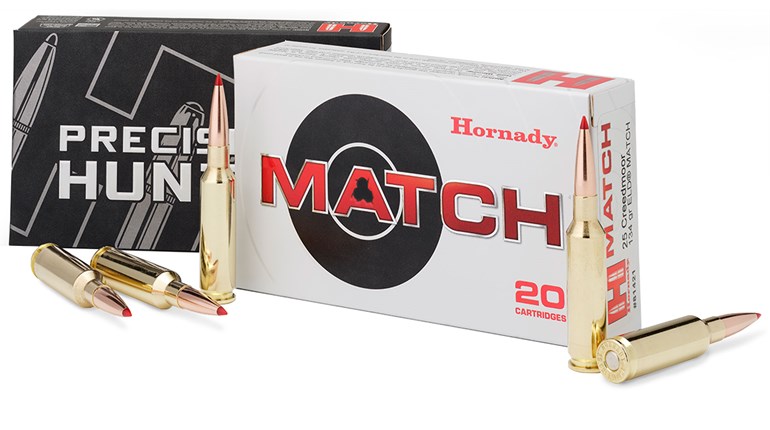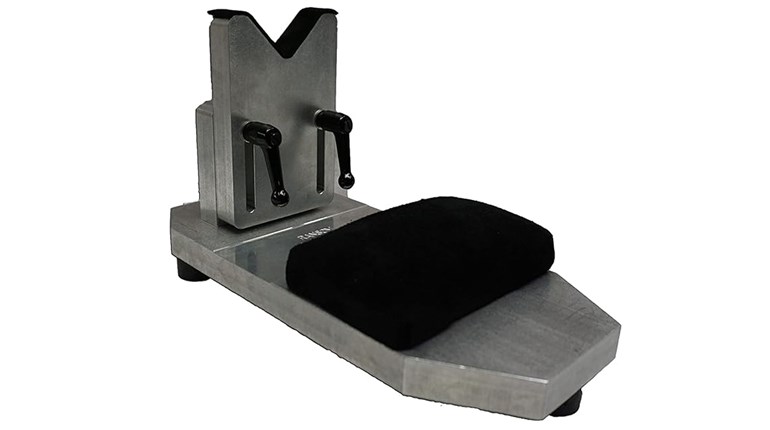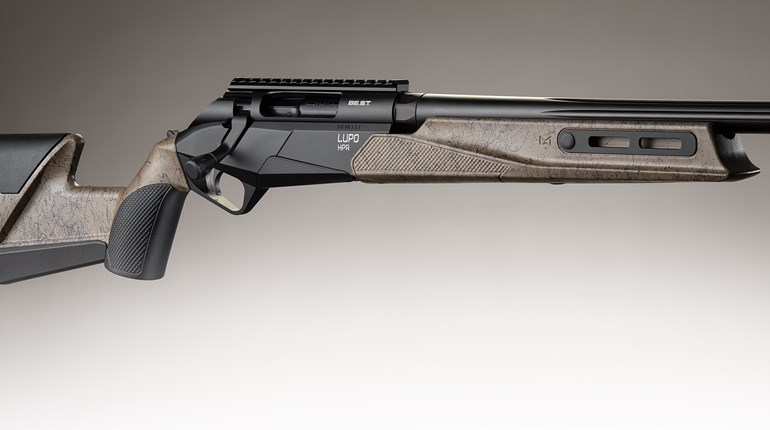
Rifle slings are curious beasts: Part rifle holster, part aiming aid, part ceremonial device and part fashion accessory. And, like clothing or shoes, they are a personal choice that can matter greatly for comfort. Clothing? Shoes? Have you ever tried on a pair of boots that the salesman assured you were your size, only to find you couldn’t walk across the room wearing them? Easy answer: don’t wear them. Ditto with slings. If you find a particular sling uncomfortable, don’t use it, even if every single SEAL in the Navy has been issued one.
There are three sling mounting systems: single-point, two-point and three-point. This is the only uncomplicated part of sling lore.
A sling, like a holster, has to hold your rifle (or shotgun) securely and safely. Unfortunately, no sling can cover the trigger as a good holster does, so you need to do more than just sling your rifle in order to be safe. The aspect you must consider is this: does your slung rifle point in a safe direction? It can’t point at you or someone else while slung, or it isn’t safe. It also has to be out of your way, and those are the main reasons I dislike single-point systems.
A single-point sling uses a chest strap, suspenders-like assembly or “corset” that you wear. There is an attachment strap that goes from the corset to the rifle. The rifle has a single point on it that the strap attaches to, usually at the rear of the receiver. The sole advantage is that you can easily switch from one shoulder to the other for firing. The disadvantages are many. First, the rifle is free to bounce around if you don’t keep a hand on it. It can bounce into you in…uncomfortable places. It can swivel and point in the wrong direction. Worst of all, it can be pointed at your feet or lower legs even when behaving itself. So, it is a single-point, but it is also a required-single-hand sling—you must keep a hand on it at all times.

Two-point slings can be mounted on the bottom of the stock or handguards (the traditional points) or on the sides or top. Rifles with two-point slings can be carried hunter-style (muzzle up, one shoulder) African-style (muzzle down, one shoulder) or tactical-style (diagonally across the body). The first two carry methods are quite safe, as they point the muzzle at the sky or the ground. The tactical method requires a bit of awareness. With this method, the muzzle is pointed diagonally, so you must be aware of who/what is a foot or so to your left (for right-handed shooters). The traditional slinging techniques are easy-on and easy-off, but using both hands for a task with them can require some juggling. The tactical method takes a bit more effort to put on or take off, but you can use both hands, still control the muzzle direction and not have the rifle fall off while moving or jam the muzzle into the dirt.
Three-point slings use a primary sling on the rifle. Then there is another sling—the secondary—that is anchored at the buttplate end, and a slider that slides up and down the first sling. The three-point sling offers just about every option for carry, but most of them end up with the rifle hanging down around your belt or knees. If you tighten the assembly so the rifle stays up at chest level, you end up with limited range of movement, limited modes of use and the feeling that at any moment your rifle will try to strangle you.
As far as aiming aids go, the sling can be of great help. Here, we have the dedicated aiming sling such as an arm cuff and sturdy strap to the handguard or rifle forearm, and the “hasty” sling. The arm cuff is just that, a belt above your bicep like a blood-pressure cuff, put on so tightly it nearly cuts off blood flow. Then the strap from it to the handguard, which often wraps around your support arm, essentially ties the rifle to your arm. This is very handy for target shooting, but more than a bit difficult to hike or stalk with. The hasty sling is a two- or three-point sling adjusted so you can “spiral” your arm around it, and the length works out to make the sling taut when you are in your firing position. The arm cuff is seen on the target range (where the rules allow). Everywhere else, everyone uses one form of the hasty sling or another as an aiming aid.

A quick aside: the Ching sling is a two-point sling with a short slider. This is not to make it a three-point sling, but to provide a dedicated stop point, and the short slider acts as an arm cuff when used as a better-than-hasty sling.
The ceremonial device? On parade, or formal guard duty, the sling (usually a two-point, on the bottom of the stock) is stored as tautly against the stock as possible. Wrestling it open to use as a carry strap is not an easy task, nor is it ever done for parade. The slings on the rifles of an honor guard never go over their shoulders.
And fashion? Really? You have to ask? Slings go in and out of fashion all the time, like everything else.
I have tried many options in all types of slings, and I have found many wanting. As a result, I have settled on the two-point tactical type as the sling I use for my rifles. One recent improvement in two-point slings is a built-in length-adjustment feature. This allows you to quickly adjust sling length to accommodate clothing, equipment, or the desire to set it to a particular length for use as an aiming aid. In no particular order, I’ve included a handful of two-point slings I have been using of late, and have found quite useful.
Tactical two-point sling use? That’s the easy part. Open the sling. Stick your head and support arm through and let it hang. It should point down and to the left (for right-handed shooters). Adjust so it hangs comfortably, but not loose. To use it as an aiming aid, when you lift the rifle to aim, reach your left hand around (outside) and then under the sling to grab the handguard, so it spirals around your forearm. If need be, adjust for proper tension for the position you are in.
There you have it: five slings, from light to maybe-not-so-light, in a variety of colors, materials, adjustment options and all made in the USA. The best part? None are so expensive that you can’t buy the two that look the most promising, try them and when you stash the other in your gear pile, you won’t feel like you over-spent. One thing I have found with slings is they can be equipment-, climate-, use- and age-dependent. What works now might not work so well when you need to add a winter coat or a plate carrier. You might find that your SBR feels better with one model rather than another. And in a few years, that sling you stashed away just might become your favorite. If there was one perfect sling, we wouldn’t need choices, would we?
As for the other types of slings? In my opinion, the best use for single-point and three-point slings are as supply sources for nylon webbing to lash cargo to a backpack or a cargo rack on a vehicle.

Armageddon Gear LFT
The LFT Lightweight sling is exactly that. Made to be as light and unobtrusive as possible, it is adjustable for length, has a wider section that rests on your shoulder and neck, and comes ready for your sling hardware. Made not just of nylon, but also futuristic materials called Hypalon and Tweave, the light weight does not come at the cost of durability. To tighten, pull forward on the loose end of the sling. To loosen, grab the 550 cord, pull the loop back toward you, taking the friction out of the buckle and the sling opens up. The LFT is available in Multicam and black Multicam. MSRP: $54.99; armageddongear.com

Blackhawk MPCS
The Blackhawk Multipoint Cushion Stretch (MPCS) sling can be had with options in color and attachments. You can have it in black or coyote tan, and you can have your choice of QD, snap hook or free ends. Free ends? That means you can attach your own choice in sling hardware, which lets you use what you like or what your rifle is built for. The MPCS also has length adjustment, and Blackhawk provides this with an easy-to-grab loop that stands up from the sling strap. With slick edges for non-rasping fit on your neck and a stretch built into the material, the MPCS is comfy to carry. MSRP: $59.95; https://www.blackhawk.com/

Savvy Sniper Quad
Handmade in Ohio, the Savvy Sniper Quad sling offers lots of extras, one of which I totally ignore. The sling is a smooth, non-stretchy nylon and has a built-in adjustment feature that you can use one-handed and without taking the rifle off. The adjustment feature has a loop to grab and pull or push that is large enough to use, but not so large it gets in the way. There’s a “fastex” buckle, so you can take the rifle off quickly by simply opening the buckle. That does turn the two-point sling into a two-piece sling, and you have to re-attach the buckle before you can put on the rifle again. The sling has a built-in bungee cord, so there’s a bit of stretch to put tension on the sling when you are using it as an aiming aid. You can have the Savvy Sniper with or without the bungee, in different widths, colors and attachment hardware. That part I ignore? You can have the Quad with a single-point attachment socket for the QD buckles. As you might have deduced by now, I hate single-point slings, so I ignore that bit of hardware. MSRP: $54.95 to $134.95; savvysniper.com

SOB Tactical B-Sling
The Sheriff of Baghdad (SOB) B-Sling uses a different method of attachment for the stock end of things. Instead of a clip or QD socket, the B-Sling has a pair of slider buckles, and you wrap the ends of the sling itself around the stock and buckle it on. The rear of the sling is not a QD setup this way, but really, do you need QD at both ends? There’s an adjustable slider for length adjustment, and you can have your choice of colors, widths and front-end-attachment systems. You can have a QD socket front or the H&K clip, which is for those who use a simple metal ring as the front attachment point. The rear attachment works best with a carbine-type, telescoping stock or, for those using an AR pistol, an arm brace. Each SOB B-Sling comes with an elastic band to keep extra sling material under control. MSRP: $26 to $79.99; sobtactical.com

Viking Tactics MK2
The Viking Tactics MK2 has a cuff assembly, which makes it a great dual-use sling. You can unclip the cuff assembly and stash it in your gear, and the MK2 becomes an adjustable two-point sling with a wider, padded section. If you want to use it as an aiming aid, you can tighten the cuff on your upper arm and then clip it to the MK2, adjust to proper tension and use it as a sniper sling. If you need movement, unclip the cuff, but leave it on your arm until you have time to take it off and stash it. Granted, this adds a few more ounces of weight, but if you want a sling that does the work of two, without the weight of two, then the MK2 is for you. MSRP: $86.12; vikingtactics.com

Magpul M-Lok QD Sling Mount
As with slings themselves, the manner in which the sling can be mounted to your rifle varies greatly. Traditional sling attachments include simple loops through which the ends of the sling are threaded, sling swivels that allow faster attachment/detachment and hooks or other hardware that facilitate even more rapid deployment.
One method growing in popularity due to its simplicity and speed of attachment is the QD mount system, which features a metal loop through which the sling is threaded that contains a push-button that allows the loop to mate with an attachment point. Magpul’s popular and pervasive M-Lok system makes the M-Lok QD Sling mount a natural choice for such a method. Using a standard push-button loop, the M-Lok QD sling mount can be mounted in virtually any configuration desired.
With a minimal footprint (1.3 inches) and light weight (0.5 ounce), the M-Lok QD Sling Mount doesn’t take up significant real estate on your accessory rail. It’s ridiculously easy to mount, and even easier to use. More and more rifles are coming equipped with M-Lok attachment points, so having numerous mounts for a favored sling setup can be shared between rifles with literally the push of a button. MSRP: $19.95





































